Garden benches come in all sizes and shapes. Some are strictly utilitarian, some decorative, and some add meaning to the garden through their design. The simple utilitarian version of a bench is a familiar sight, whether with a back …

This bench from a garden in Newfoundland invites you to sit down and admire the pond and the plants around it.
… or without.

This bench is stylish even though simple in the extreme, thanks to the chunky legs and squared off seat.
The chunky bench below was made from a single tree trunk. Set against a wall of the house, it’s easy to imagine sitting on it for hours, soaking up the sunshine.
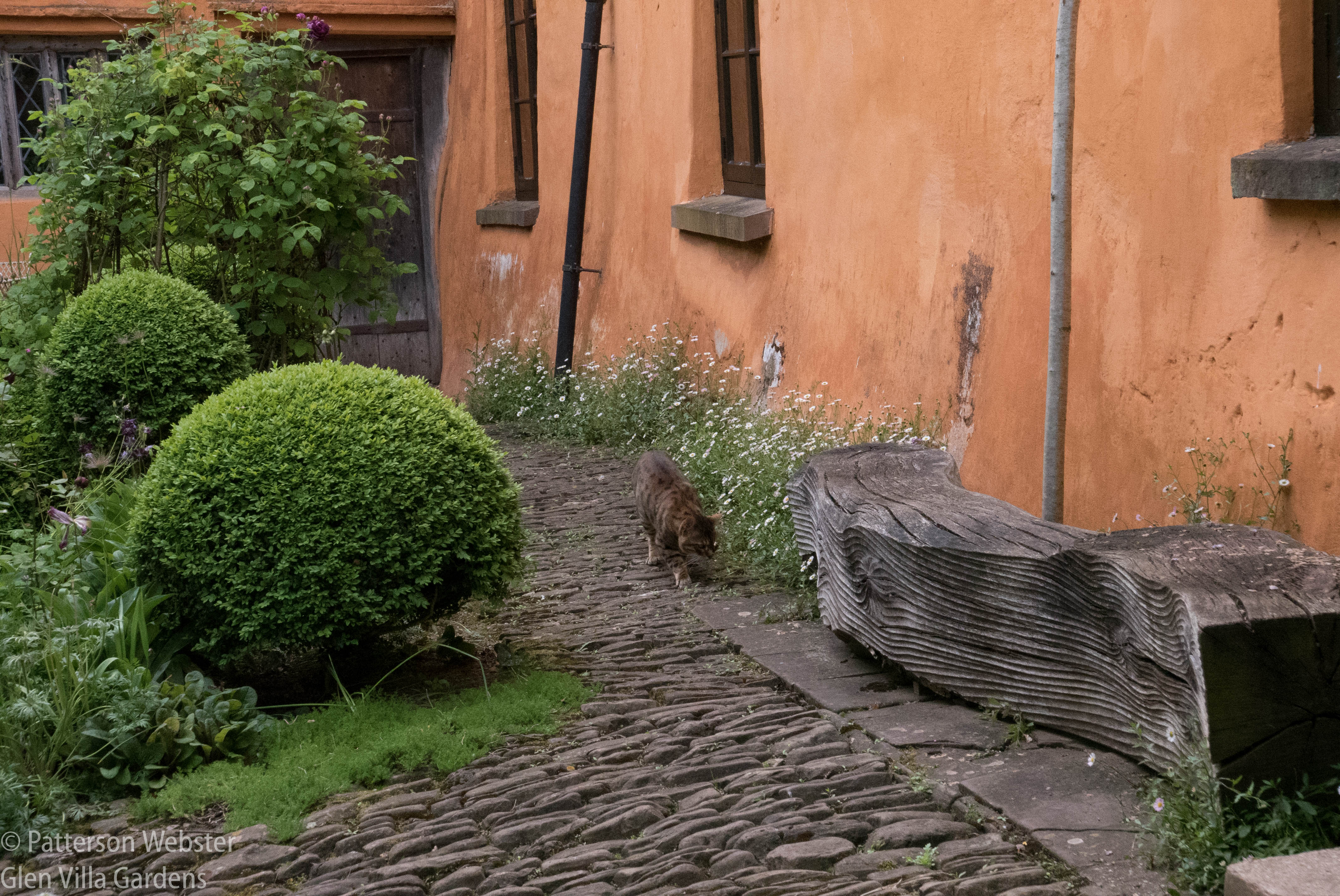
The curved and grooved side of this bench at Allt-y-bela, Arne Maynard’s garden in Wales, make it particularly interesting.
This open-armed bench is both formal and gracious, with spreading sides that convey a welcoming spirit. The well-worn grass around it suggests that the bench is well used.
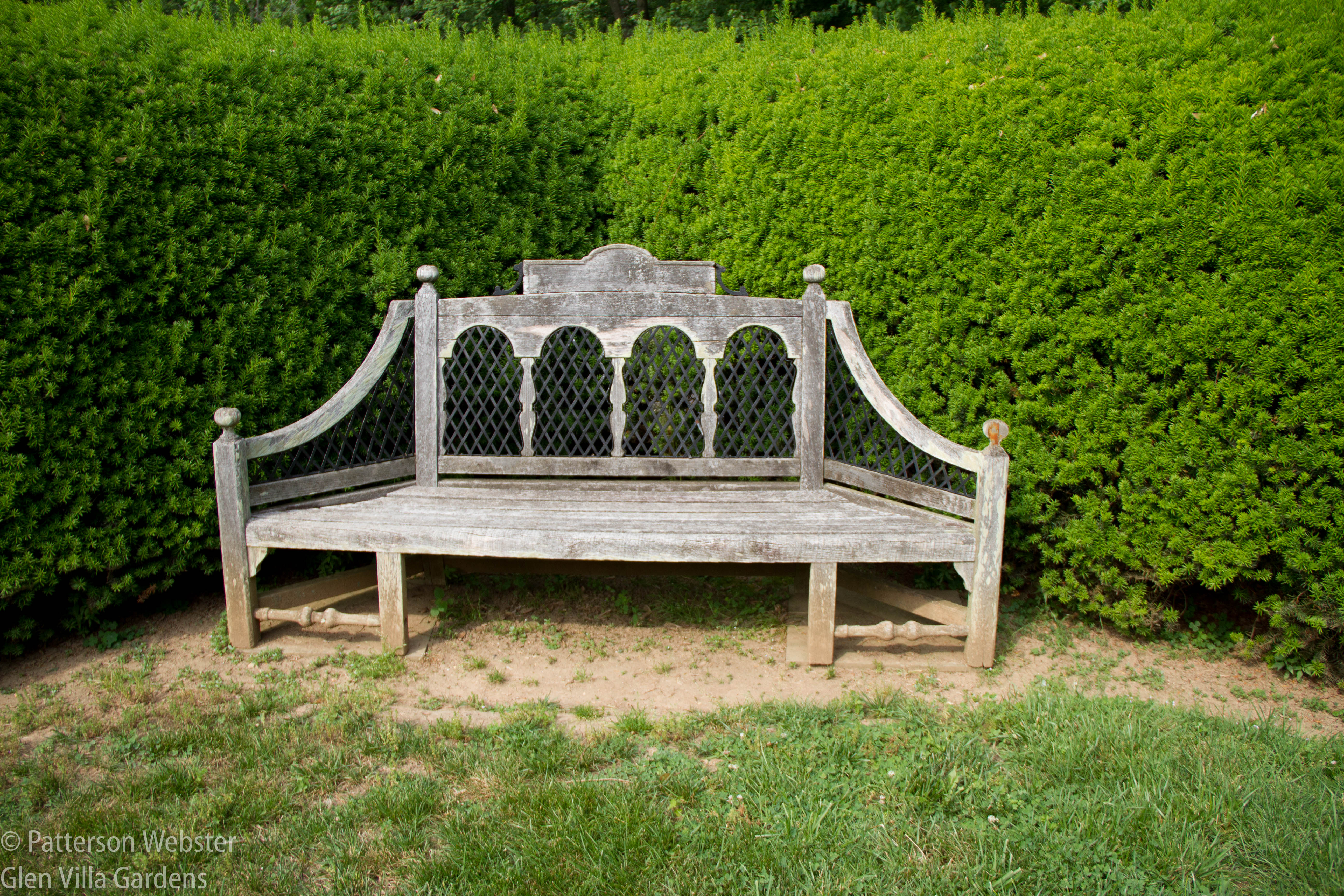
This bench at Dumbarton Oaks in Washington may have been designed by Beatrix Ferrand. I don’t remember where it was located in the garden. Does anyone know?
Benches at Glen Villa are simple yet each is individually designed to suit its particular location. The Skating Pond is naturalistic and the bench above it consists of two planks set atop two round rocks.
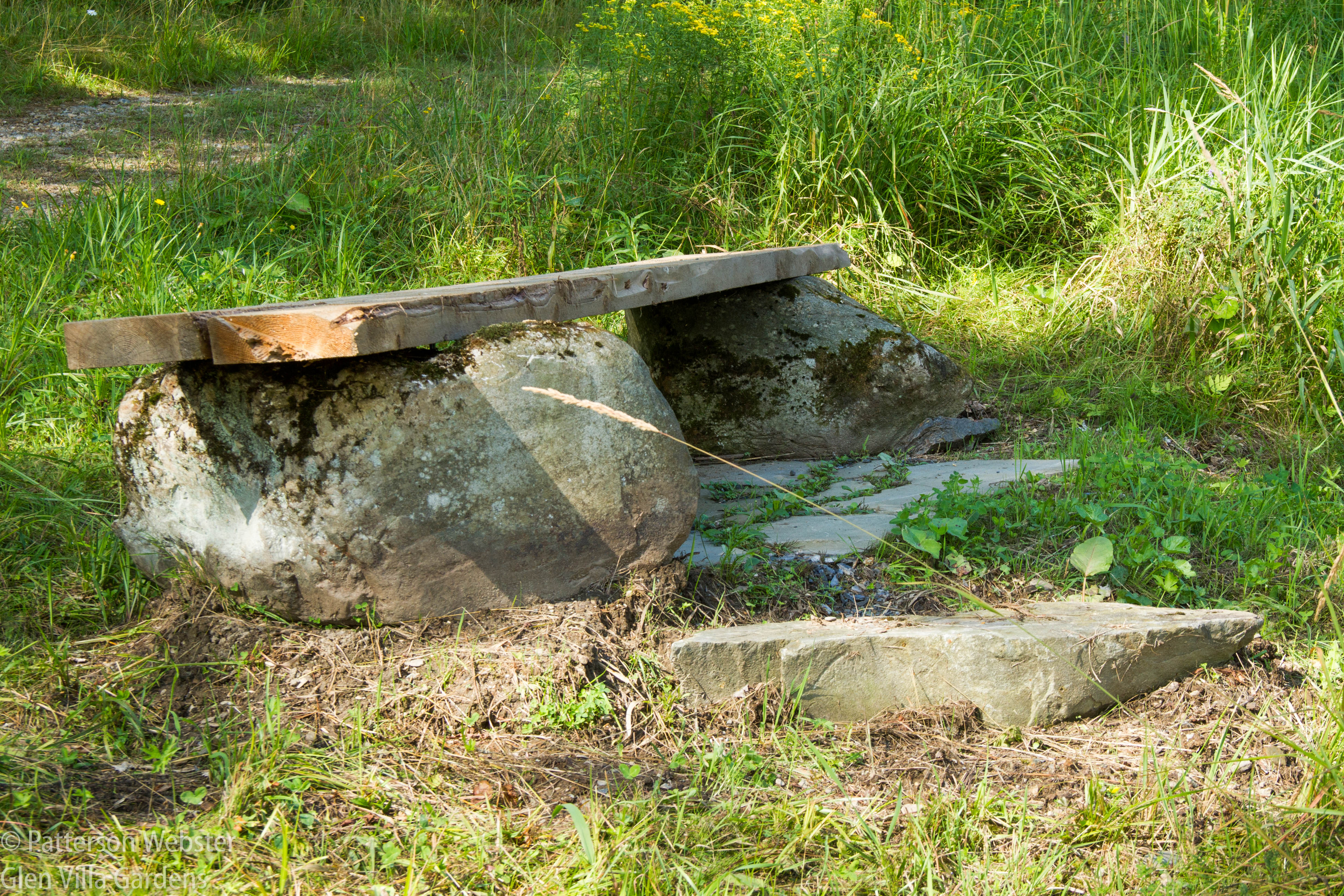
The simplicity of this bench is in keeping with the natural landscape at the Skating Pond.
The most elaborate bench at Glen Villa is the one around the linden tree at the end of the Big Meadow. Recently rebuilt by local woodworker Mike McKenna, this bench looks simple but the math behind it is quite complex.
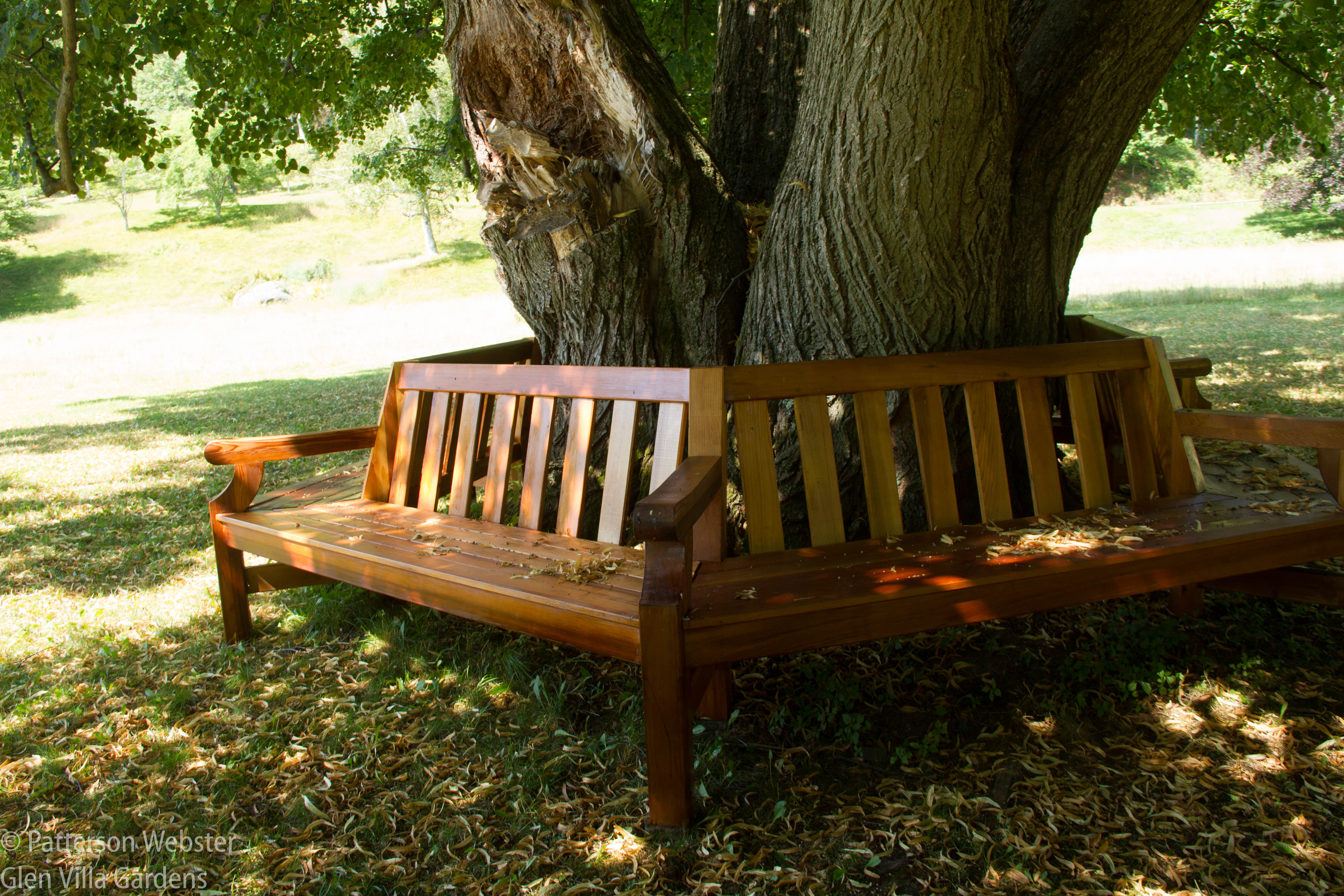
The ground on one side of the tree is much lower than on the other. Making the bench both level and at a comfortable height on all sides took careful measuring.
The bench at the Sundial Clearing is equally simple but the simplicity and the words on the seat reinforce the ideas about the passage of time that are behind this part of Timelines, the trail that explores questions of memory, identity and our relationship to the land.

The words En Route/In Transit are carved into the pine board seat.
The bench near the entry to Veddw, Anne Wareham and Charles Hawes’ garden in Wales, announces an underlying theme of the garden, its acknowledgement of, and respect for, the history of the site.
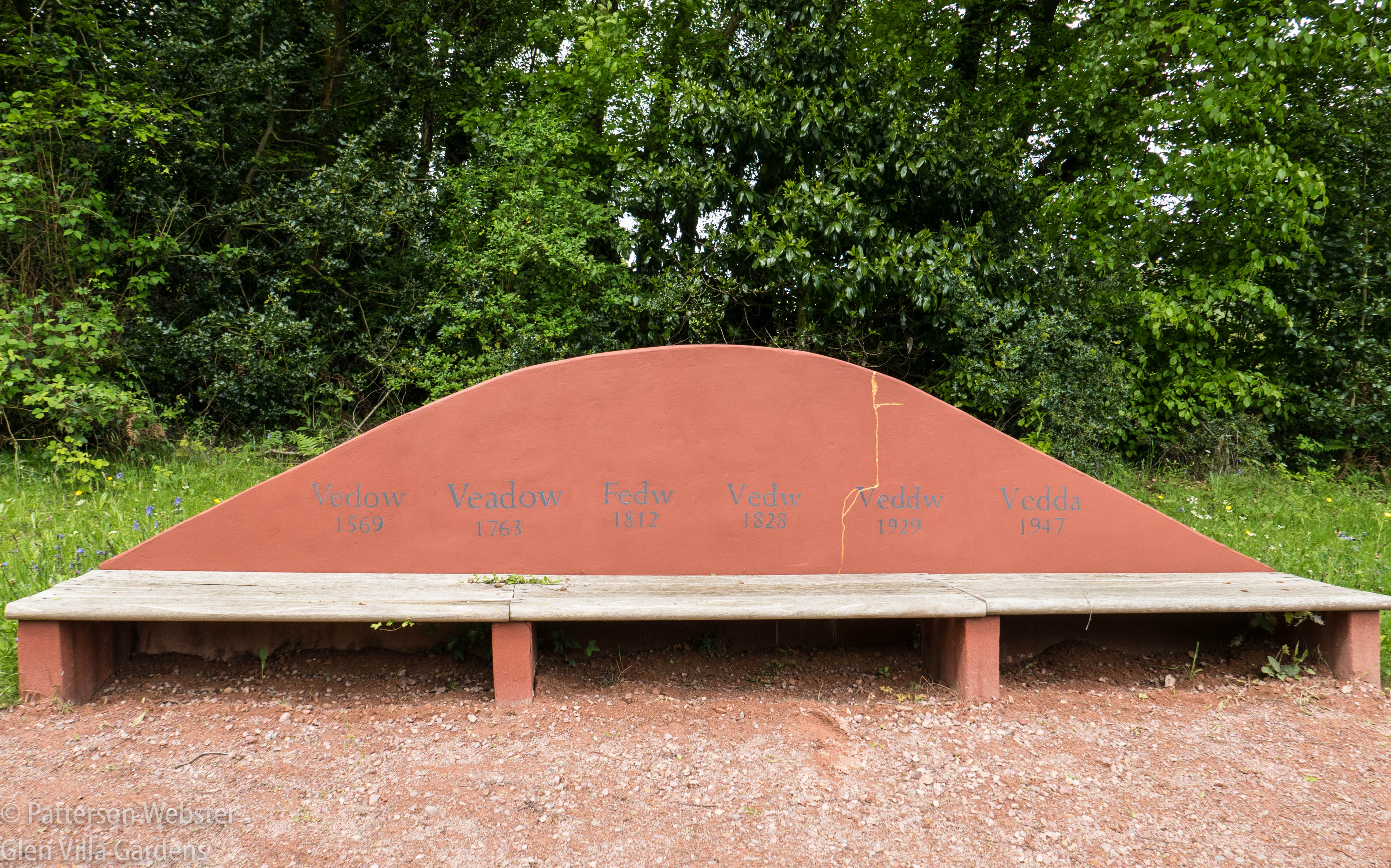
The colour of this bench makes it memorable, even without the names and dates of previous owners painted on the back.
History is marked is a less self-effacing way in white metal benches at Somerleyton, an English estate in East Anglia — the initials under the seat are those of Francis Crossley, a carpet manufacturer who acquired the property in Victorian times.
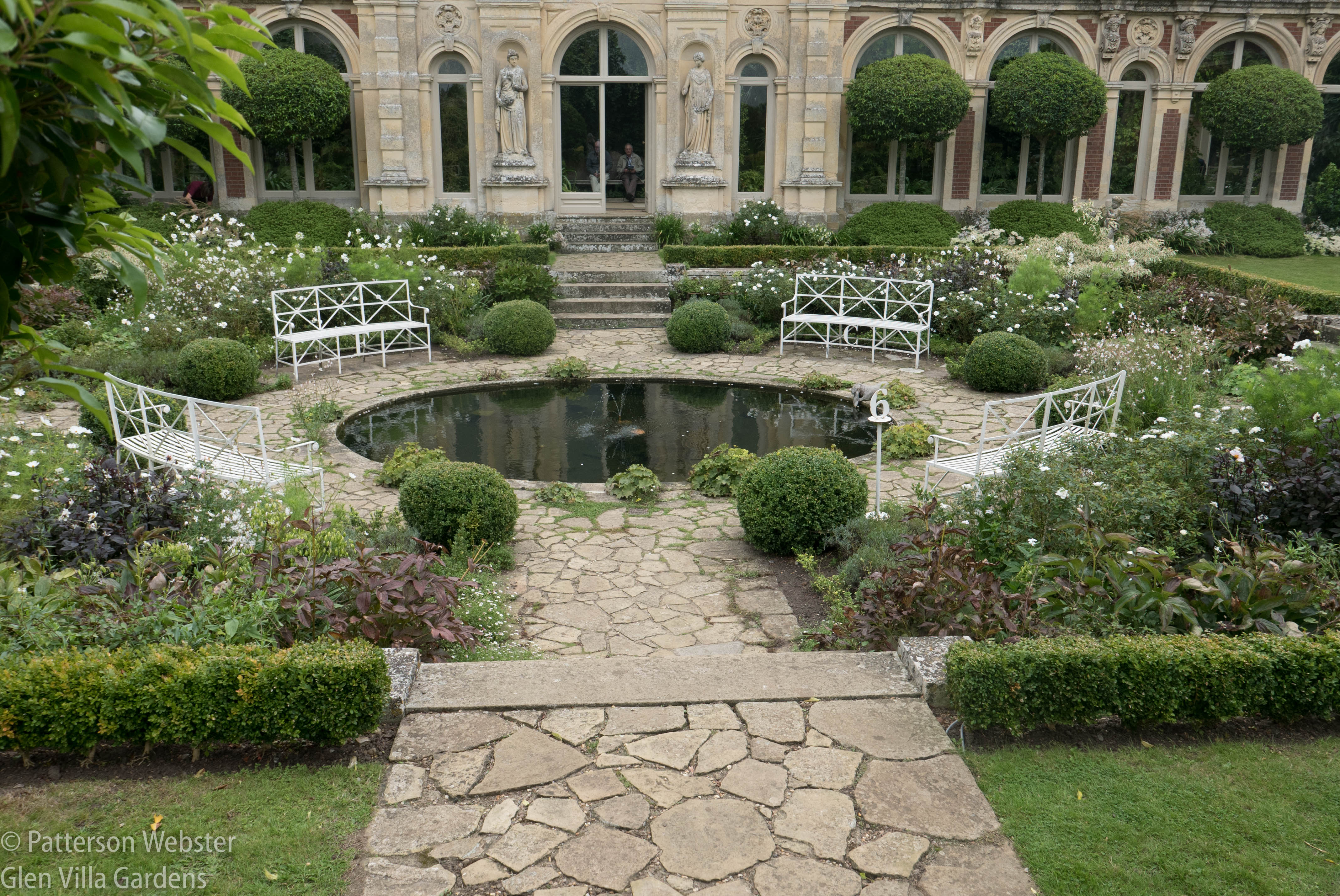
I don’t know if these benches were designed for Francis Crossley or came later to recognize his role in the property’s history.
When wooden benches are painted, they send a different message than when they are left to weather on their own. This pale blue bench is at Wyken Hall in Norfolk. Designed by Arabella Lennox-Boyd, the unusual colour combination adds an appropriately stylish note to a small side garden.
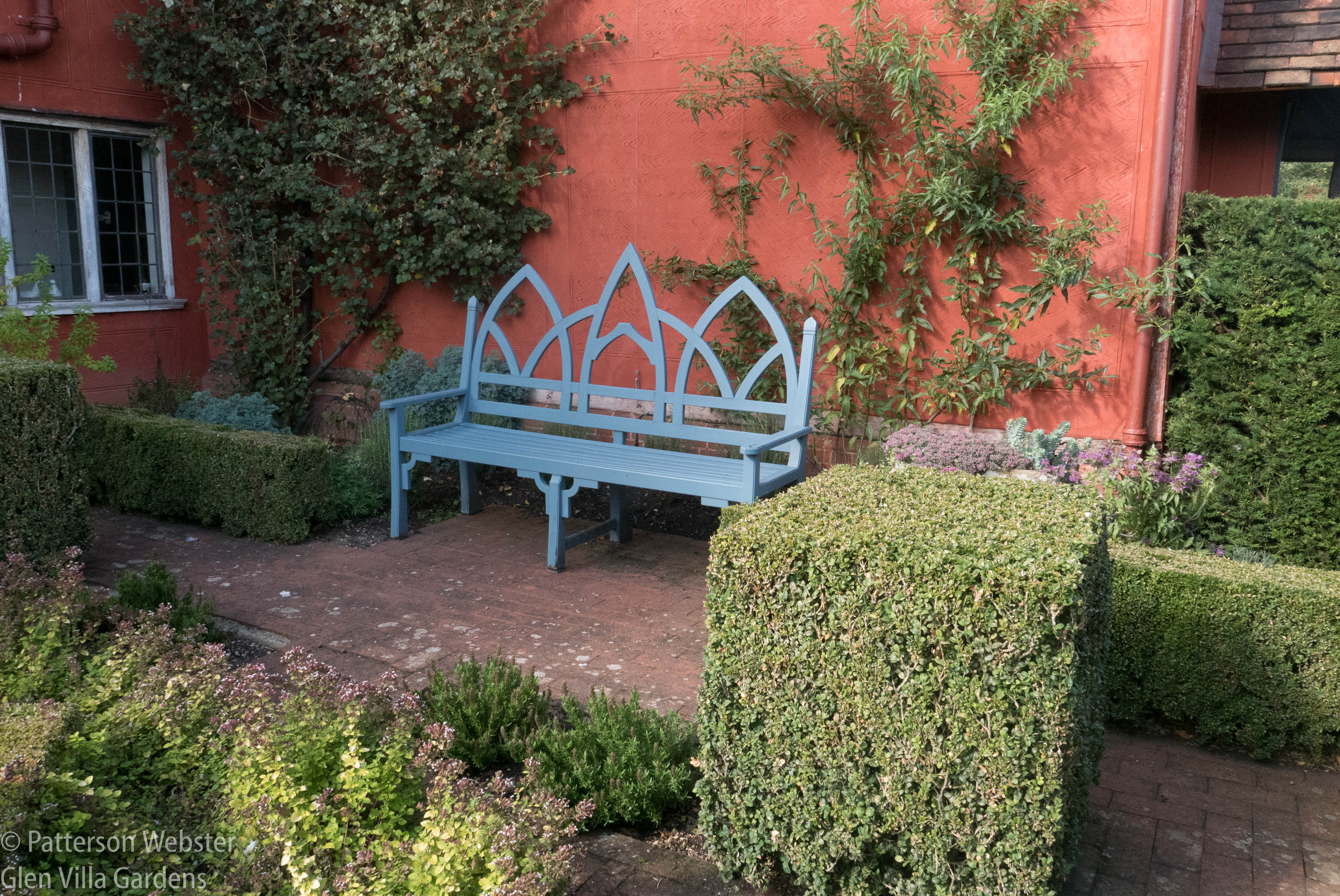
The Gothic style of this bench suits the style of the house.
Primary colours characterize Madoo, the artist Robert Dash’s garden on Long Island, and benches carry the colour theme throughout the garden.
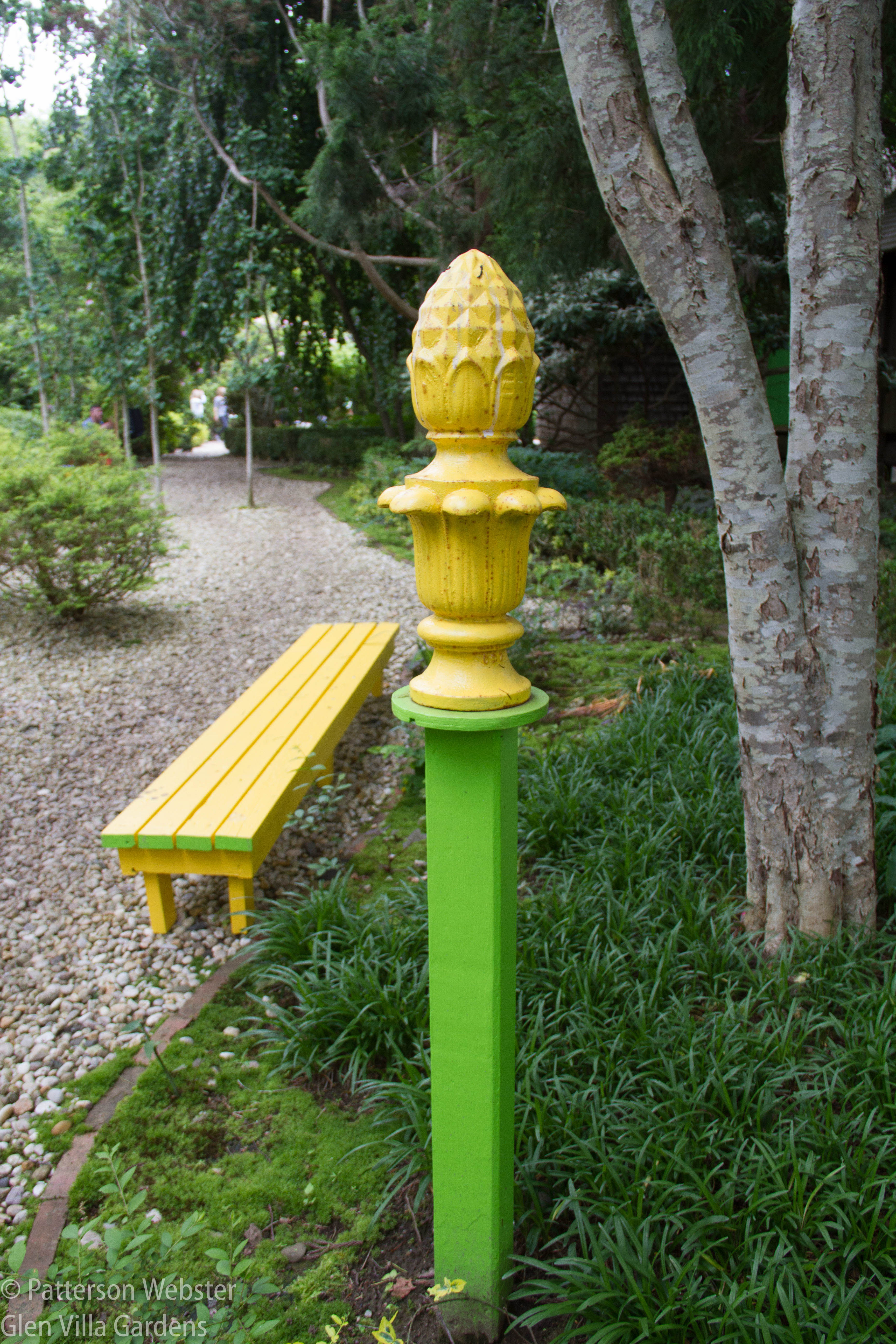
I love that the end of the simple board bench is painted lime green. A nice detail!
Stone benches are durable and many, even when new, suggest formality and antiquity.
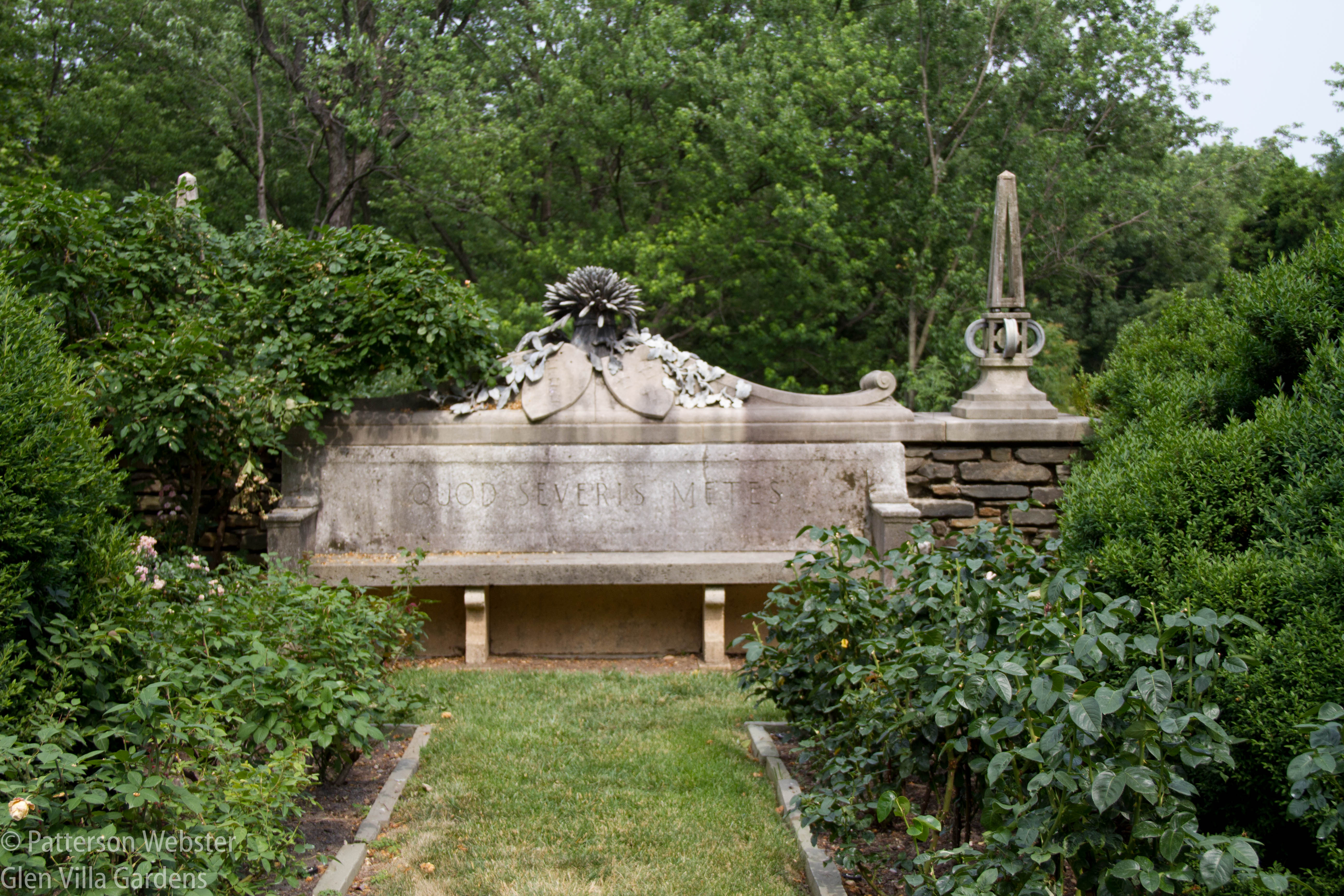
This bench at Dumbarton Oaks in Washington bears the family’s motto: As you sow, so shall you reap.”
Living benches aren’t very comfortable but they look good even when they need a haircut.
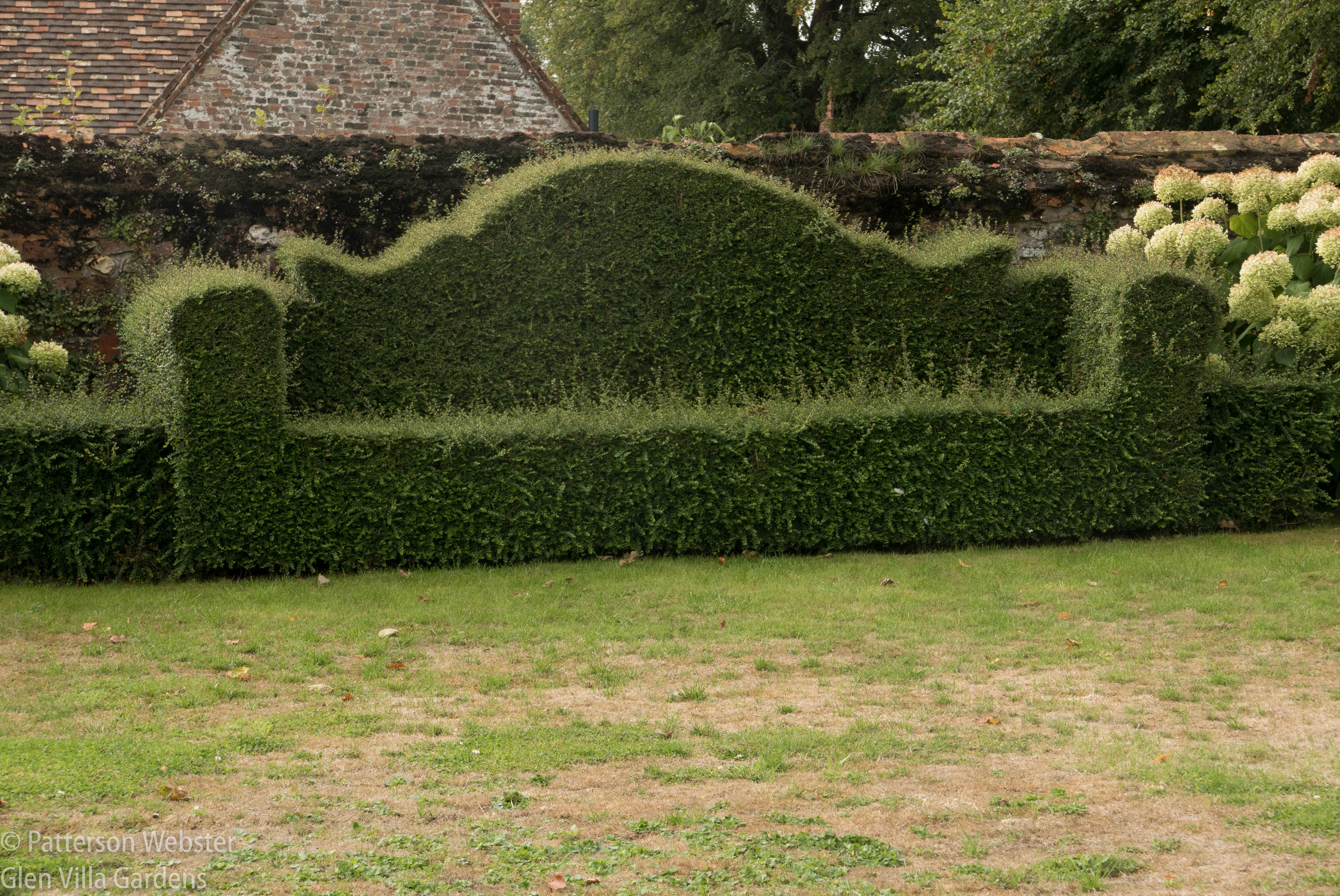
This living sofa at Castle Rising, a garden in East Anglia, overlooks a tennis court.
One of the most inventive benches I’ve ever seen was a metal bench, folded and printed with a map of Massachusetts.
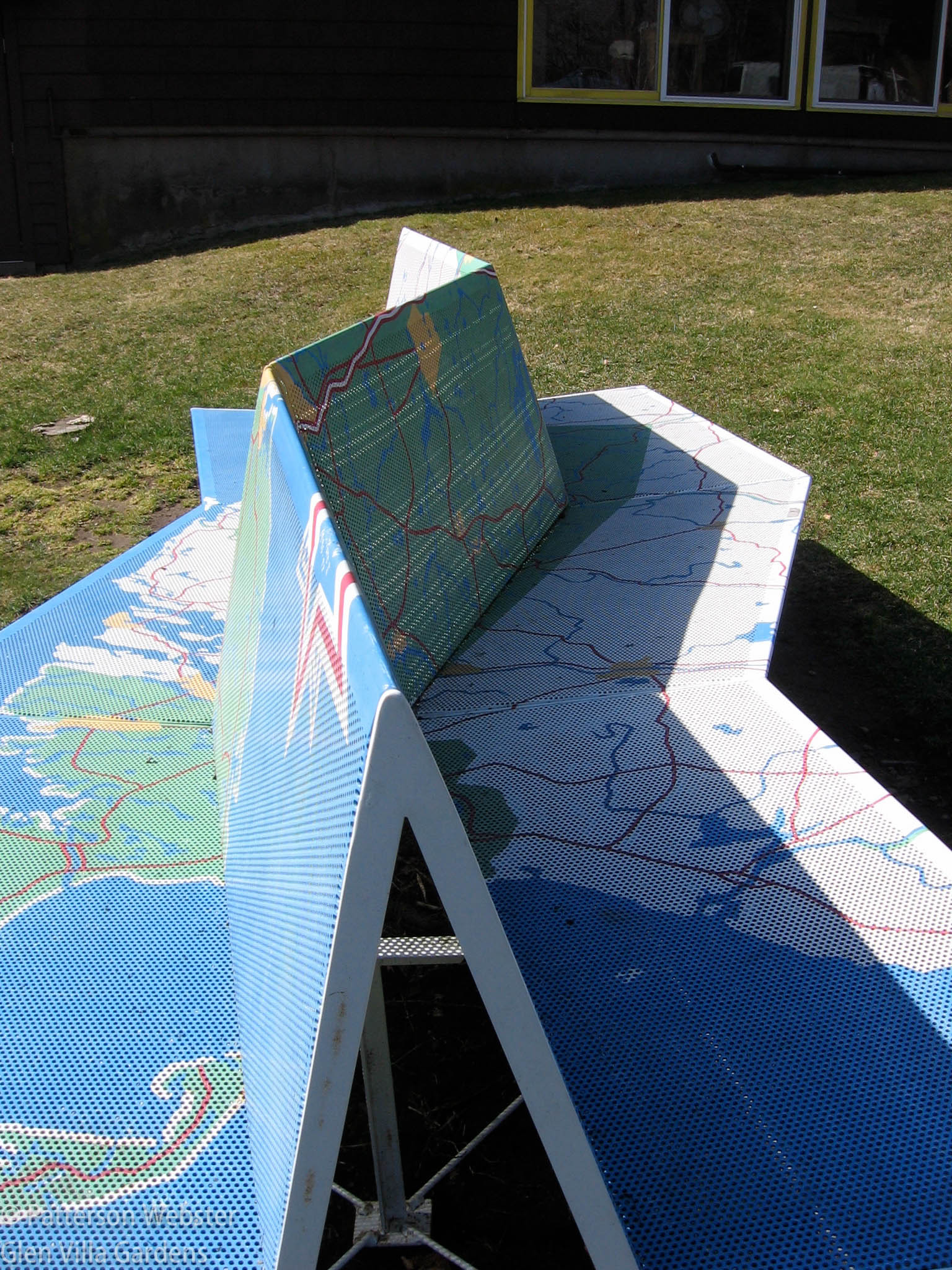
This bench is at the DeCordova Museum in Lincoln, Massachusetts. I wish I knew who designed it.
Benches are much on my mind — a garden that doesn’t offer a place to sit is, in my mind, an unwelcoming garden. Near Bridge Ascending, the sculpture made to commemorate an old covered bridge, timbers stacked one on top of another offered a sunny place to sit and admire the sculpture.
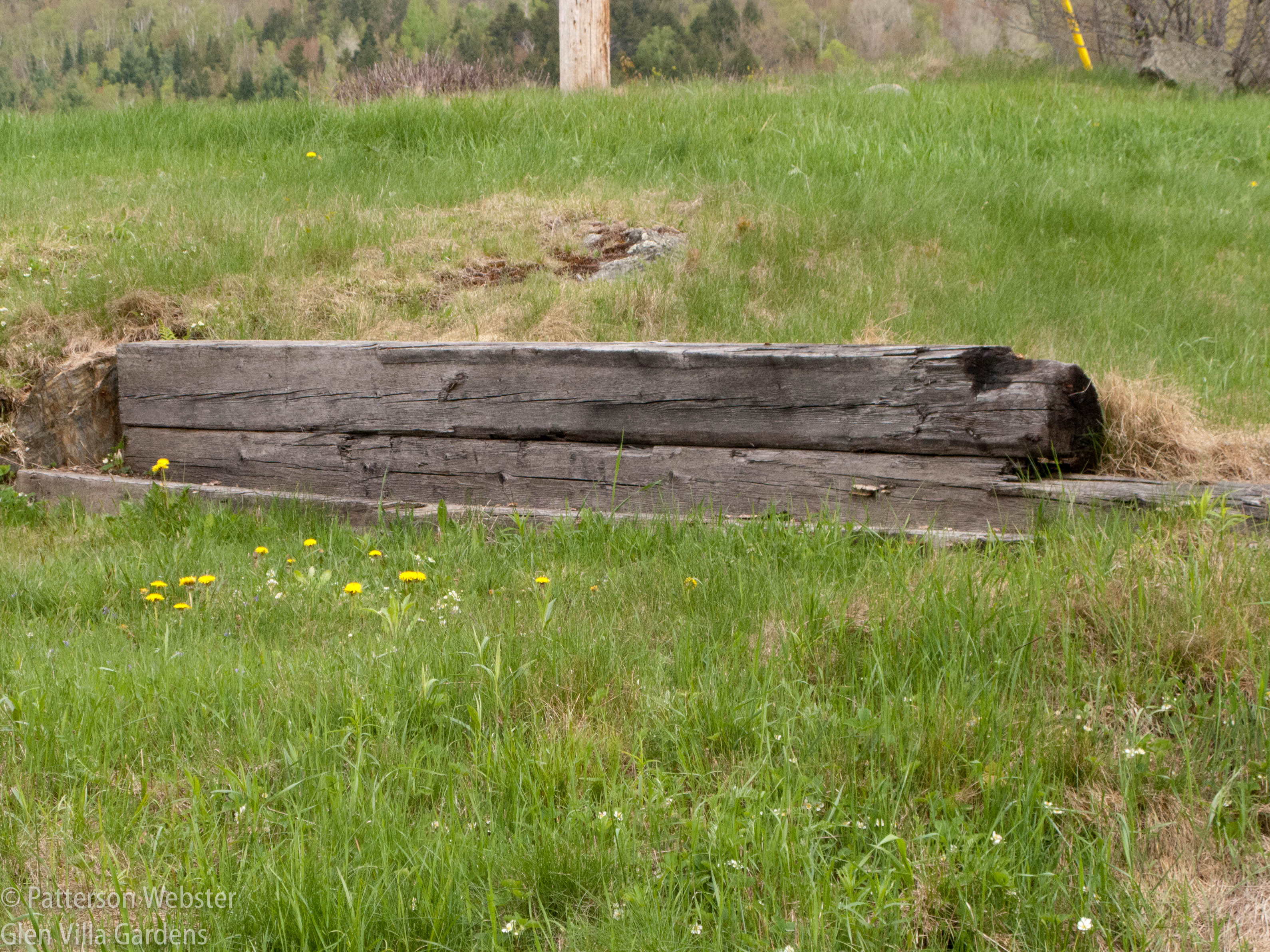
The timbers lasted well over fifteen years and would have lasted longer if I’d put something underneath to keep them off the ground.
This bench is now badly rotten and unsafe. It needs to be replaced. But with what style of bench, made from what material? I’m not sure but I have an idea…
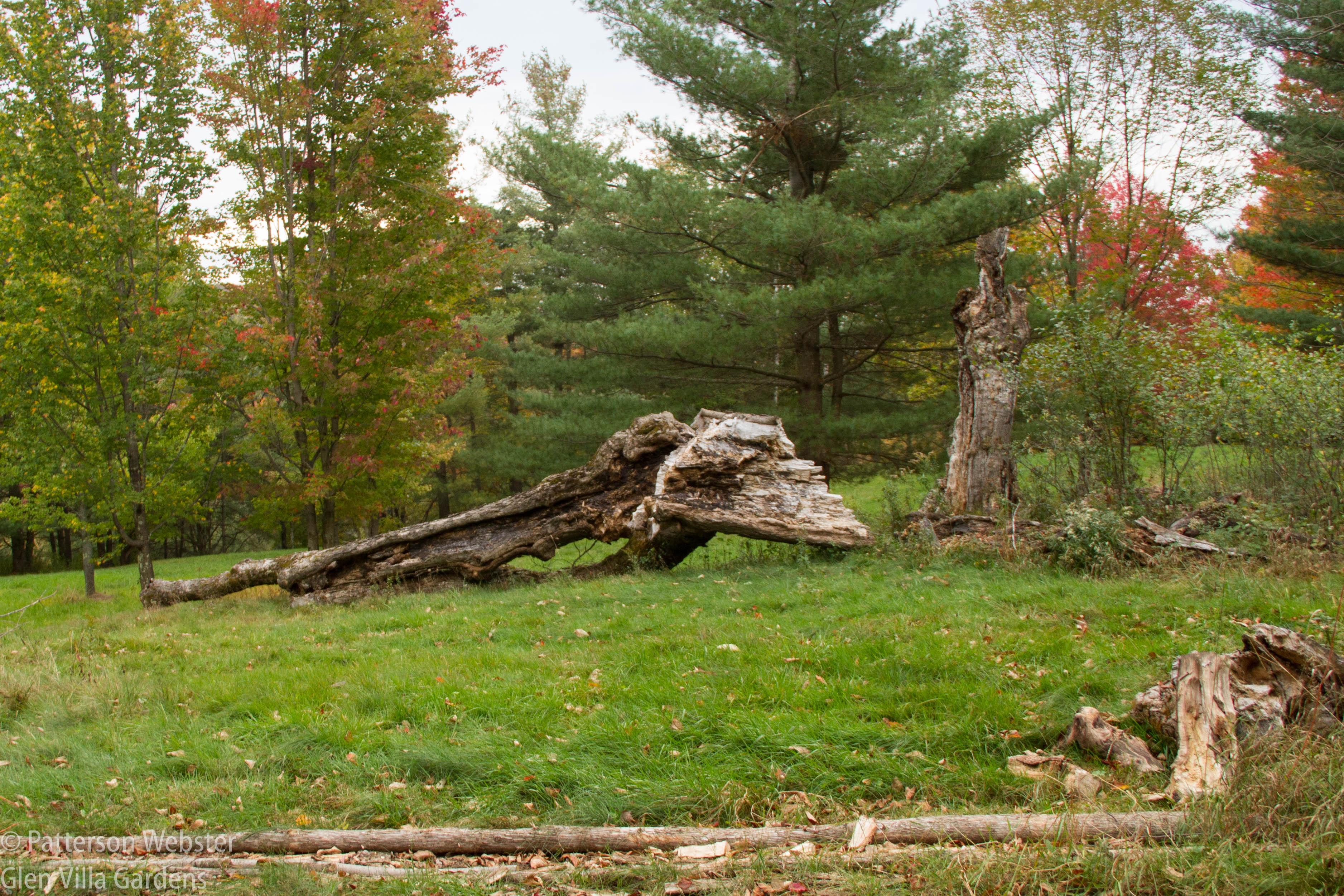
Could this immense tree trunk become an inviting bench? Hm-m-m…
___________________________________________________________________________
I’m now booking talks for the up-coming year, so do get in touch if you are interested.
You can also follow me on Instagram, at glen_villa_garden I’m posting three times a week with photos from gardens around the world. This week’s posts include two gardens in Scotland.
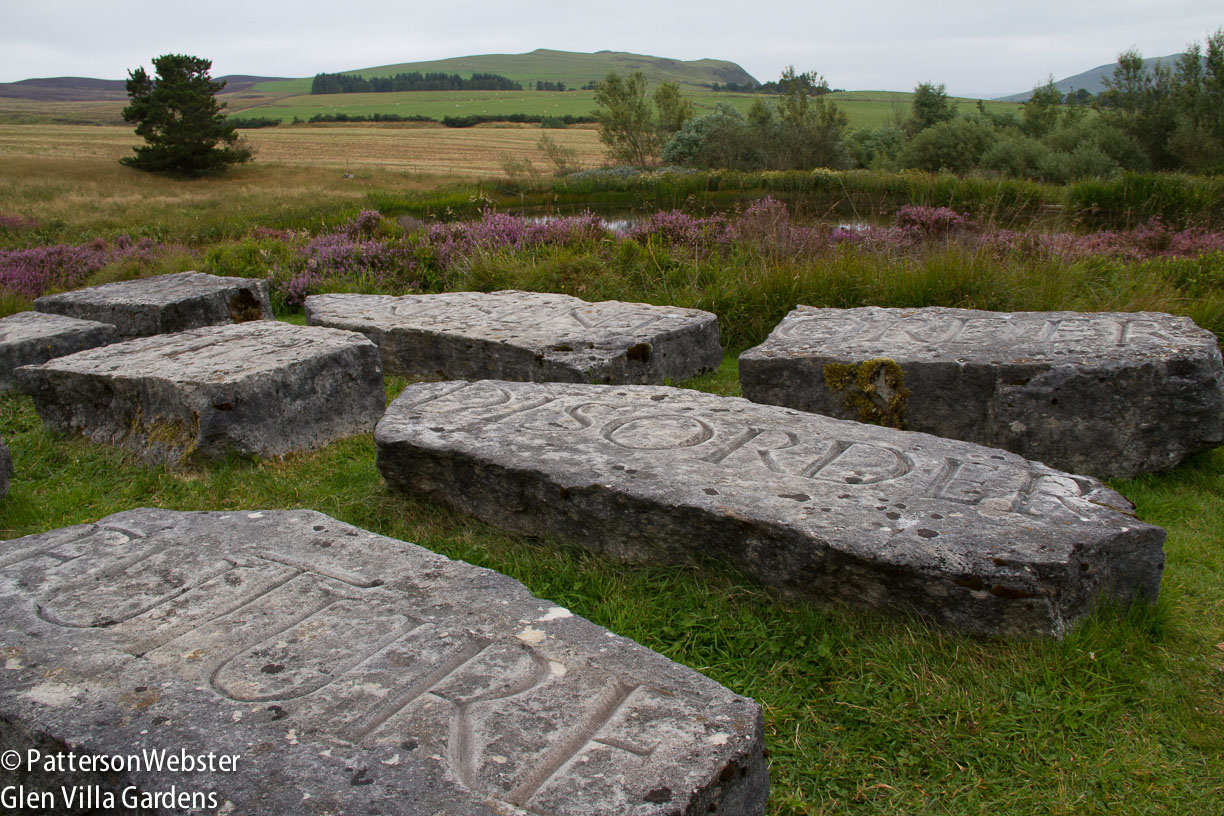
Order and disorder: words can be arranged to say whatever you want.

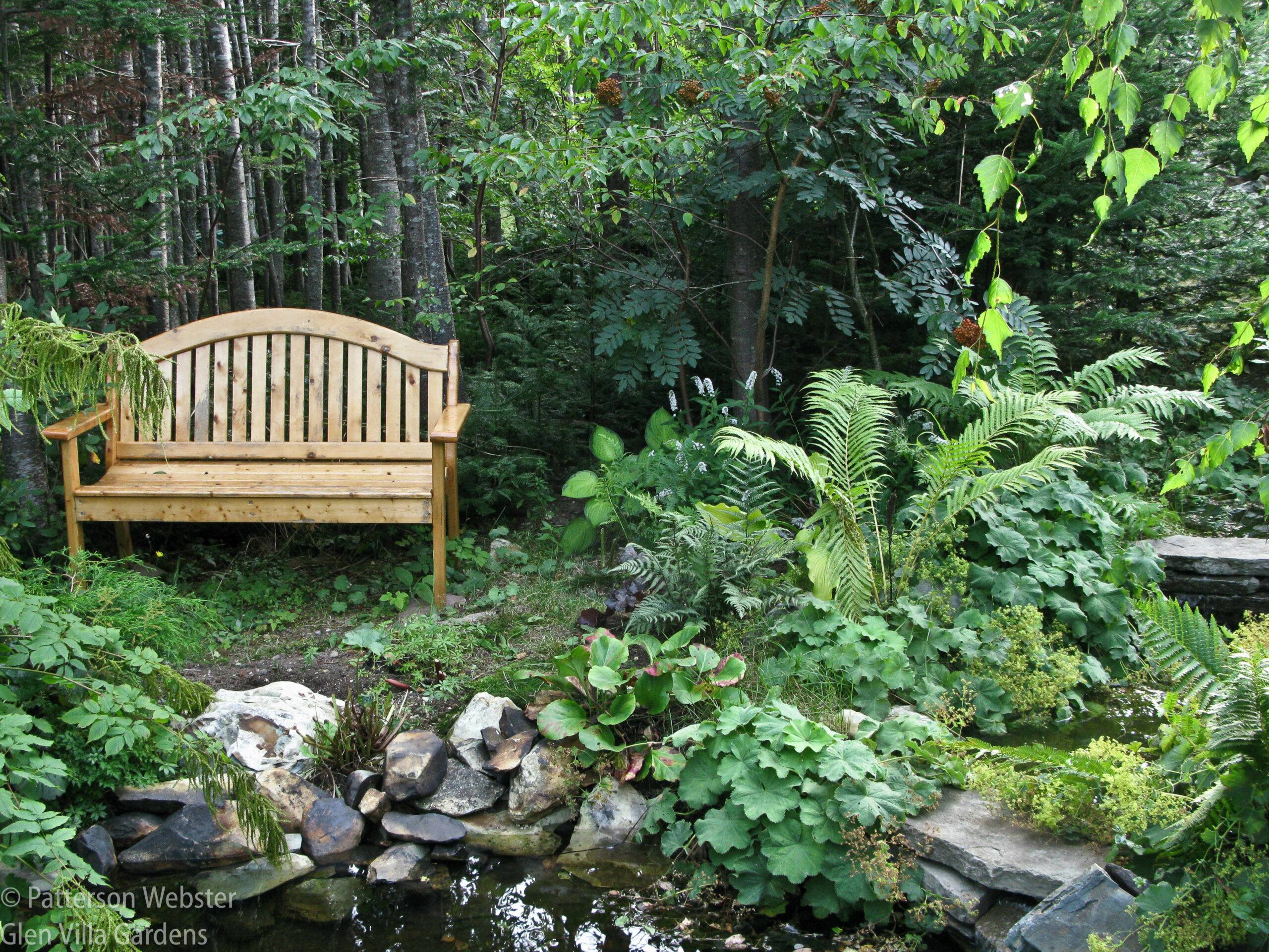





Absolute must for spending time reflecting on the garden ……..day dreaming!
Can never spend too much time day dreaming.
Seating in a garden is so interesting — your examples are wonderful!
Thanks Lisa.
What I don’t like to see in a garden is a bench that has a bad view when you sit in it. Then I suspect the bench is there for decoration. I suppose if it’s on a hill or a long staircase, it will provide needed rest even if it faces something ugly. But most of the time I think you can arrange seating so the view is at least pleasant from the seat.
It is always a treat to read your blog and see the lovely photos you include. I look forward to seeing your garden next month.
Hope to see you soon, Cliff.
All the benches in your gardens have such great views.
Too kind!
Benches are always fascinating. Les bancs sont toujours fascinants, particulièrement ceux avec des mots. ”Order and Desorder” : Where are those stones ? (Which country ?) MERCI.
The stones are at Little Sparta, a garden near Edinburgh made by Ian Hamilton Finlay. It’s a fascinating place in a beautiful setting.